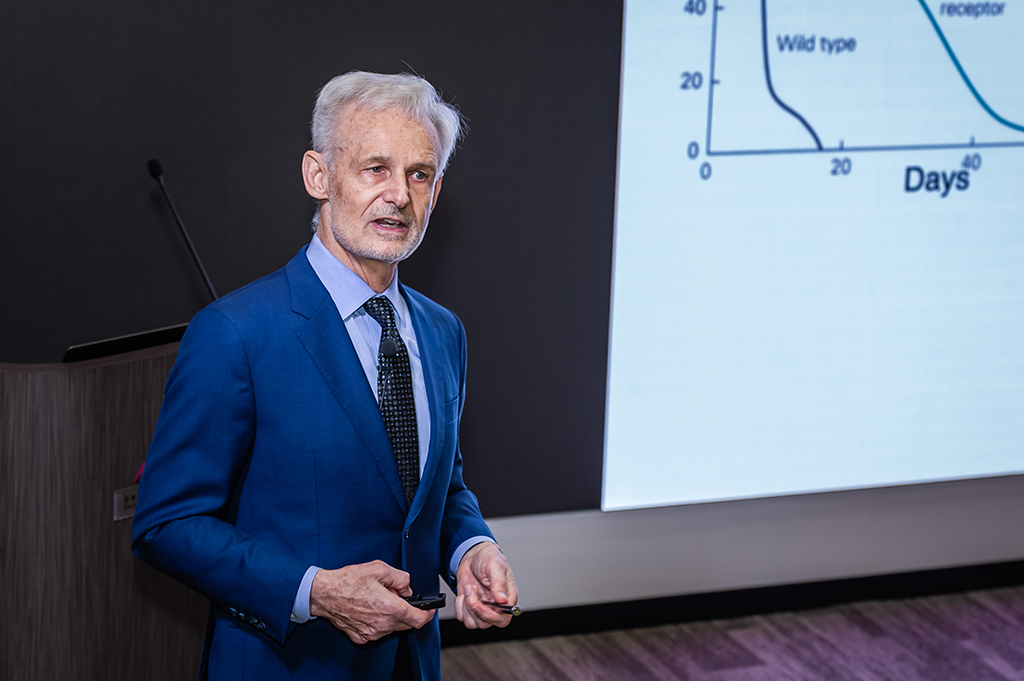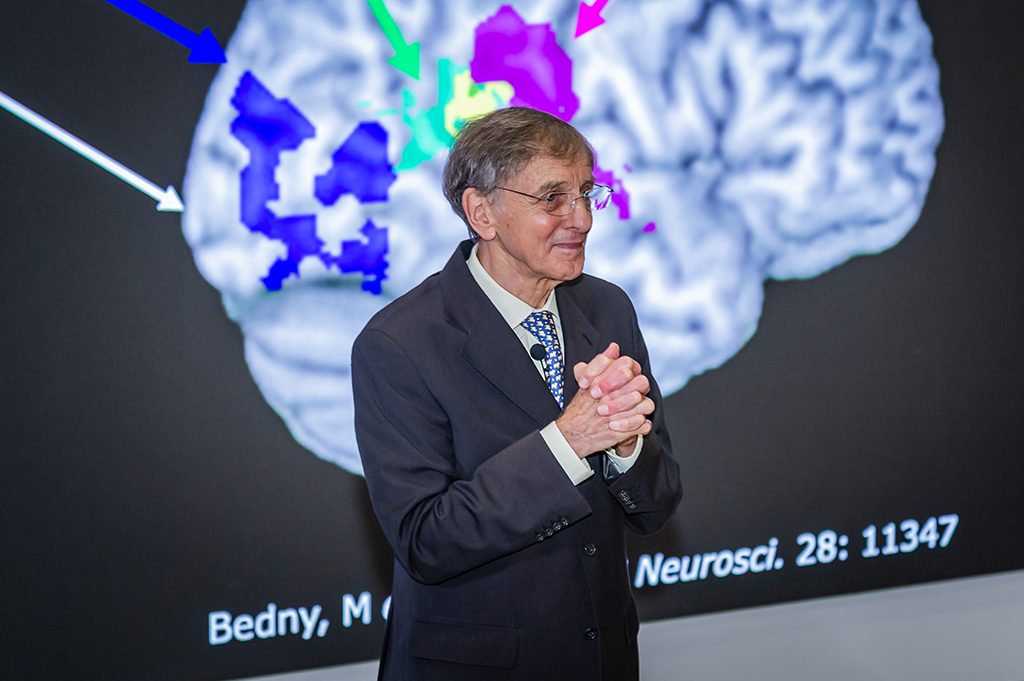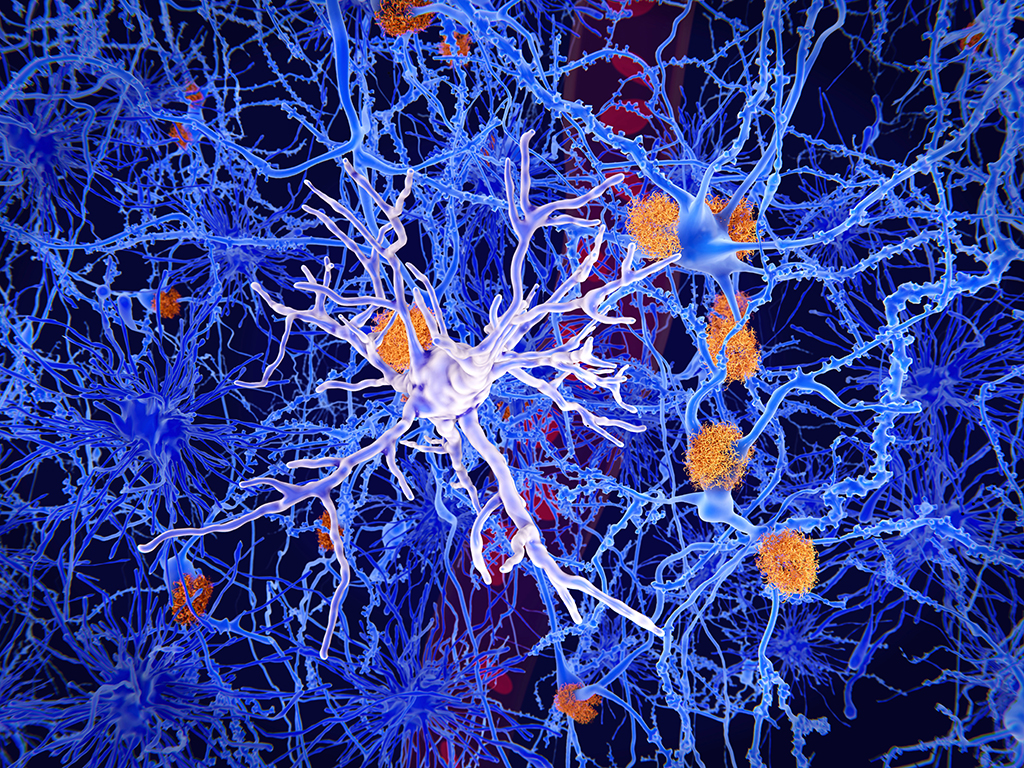
Life in the brain lane – neuroscience for a new era
By : Michael Gibb
Powering up positive change for a better society is an overriding driver at CityU. By forging a highly collaborative, multidisciplinary hub for the study of the brain and the central nervous system, our new Department of Neuroscience will contribute to professional education and translational research for improving people’s lives.
A neuroscience focus strongly aligns with CityU’s strategic direction over the next phase of our development. Our new Strategic Plan 2020–2025 identifies the Brain as one of our five areas of research excellence. The other four are One Health, Digital Society, Smart City and Matter.
“Connecting strongly especially with One Health, research into the human brain advances our understanding of human intelligence, which holds out the possibility of enhancing this capability and society,” says President Way Kuo.
“By drawing on computer science, neuroscience, psychology, and linguistics, among others, and deploying tools embedded in data science, a focus on the brain will enable interdisciplinary CityU teams to make major contributions to these vast areas of study,” he adds.
The all-powerful brain
 Professor Bruce Ransom One of the leaders of the new CityU neuroscience drive is Professor Bruce Ransom. He is supervising the development of neuroscience within the Jockey Club College of Veterinary Medicine and Life Sciences (JCC), alongside the Department of Biomedical Sciences, Department of Infectious Diseases and Public Health, and Department of Veterinary Clinical Sciences.
Professor Bruce Ransom One of the leaders of the new CityU neuroscience drive is Professor Bruce Ransom. He is supervising the development of neuroscience within the Jockey Club College of Veterinary Medicine and Life Sciences (JCC), alongside the Department of Biomedical Sciences, Department of Infectious Diseases and Public Health, and Department of Veterinary Clinical Sciences.
Professor Ransom can’t stress enough the importance of neuroscience within higher education.
“The brain is relevant to all our creativity, achievements and forward trajectory of knowledge,” he says.
On the one hand, neuroscience explores cellular and molecular biology in terms of our anatomical and physiological understanding of the nervous system, a journey that offers potential for better understanding medical conditions and diseases such as Alzheimer’s, Parkinson’s, amyotrophic lateral sclerosis (also known as Lou Gehrig’s diseases or motor neurone disease), and strokes.
It’s also fundamental to our attempts to comprehend cognition and behaviour, such as how we learn languages and how memory works.
“The brain is such a profoundly capable organ. It’s not like the liver, for instance, that has a specific function in the body, like filtering the blood. The brain is the most perplexing organ in the body and there is still a great deal we simply don’t understand,” Professor Ransom says.
Laying foundations
Professor Ransom couldn’t be better qualified to lead CityU into neuroscience in terms of research excellence and administration experience. He not only possesses the credentials of being a world-class authority on specific areas of neuroscience, he also founded the Department of Neurology at the University of Washington in 1995.
 Professor Sir Colin Blakemore While we are still very much in the early days of establishing CityU’s new Department of Neuroscience, the plan over the next five years is to hire 15 to 20 faculty members who will provide the optimum balance between young scholars pursuing exciting areas of research and researchers who are already established and known in their fields.
Professor Sir Colin Blakemore While we are still very much in the early days of establishing CityU’s new Department of Neuroscience, the plan over the next five years is to hire 15 to 20 faculty members who will provide the optimum balance between young scholars pursuing exciting areas of research and researchers who are already established and known in their fields.
The department is already benefiting from the input of Professor Sir Colin Blakemore, Yeung Kin Man Chair Professor of Neuroscience at CityU and Senior Fellow of the Hong Kong Institute for Advanced Study. Sir Colin leads a network of philosophers and scientists working on human perception, and he directs the Human Mind Project, which aims to define key questions about the nature and function of the mind.
“The brain is relevant to all our creativity, achievements and forward trajectory of knowledge.”“When I look at the talent already at CityU, I am very excited about the future. At CityU there are many experts in fields directly related to neuroscience and I am certain our new department will provide an excellent platform for bringing people together to talk and collaborate,” Professor Ransom says.
The challenge is immense, but neuroscience is noted for its complexity.
“Even after 50 years in this field, I am still dazzled how hard it is to reach a full understanding of the brain,” Professor Ransom says.
“Maybe we’re not smart enough yet to fully understand the brain but what motivates me here at CityU is that we can learn enough with the talent and resources available to make a real difference in people’s lives.”
CityU’s emergence as a major hub for education about and research into neuroscience has real potential to add to our understanding of the brain.
Getting to know glia
 One area of research that Professor Ransom intends to promote at the new Department of Neuroscience at CityU is glial cells. He co-founded and co-edits Glia, the go-to journal for the field, with Professor Helmut Kettenmann, an expert in cellular neurobiology at the Max Delbrück Center for Molecular Medicine in Berlin.
One area of research that Professor Ransom intends to promote at the new Department of Neuroscience at CityU is glial cells. He co-founded and co-edits Glia, the go-to journal for the field, with Professor Helmut Kettenmann, an expert in cellular neurobiology at the Max Delbrück Center for Molecular Medicine in Berlin.
Glial cells occupy about half the space in the brain. They outnumber neurons 9 to 1 and play a much greater role than previously thought in regulating the environment around neurons. They were discovered in the mid-1850s by the Prussian pathologist Rudolf Virchow who was looking in the brain for connective tissue, like fibrocytes which bind cells together elsewhere in the body. To describe glial cells, he coined the term “neuroglia”, which in Greek roughly means “nerve glue”.
Until recently, glial cells were considered to be purely support cells for the more glamorous thinking elements, the neurons. Now their roles are understood to be essential for brain functions, even the fancy stuff like memory and learning.
One type of glial cell is the astrocyte, which figures prominently in CityU research led by Professor Li Ying of CityU’s Department of Biomedical Sciences on brain signalling molecules that can improve decision-making performance. His discovery provides insight into mitigating cognitive dysfunctions caused by chronic pain.
The CityU researchers found that L-lactate released by astrocytes are utilised by neurons to affect information flow and synchrony in the brain neural circuitry, and hence can improve decision-making performance.

